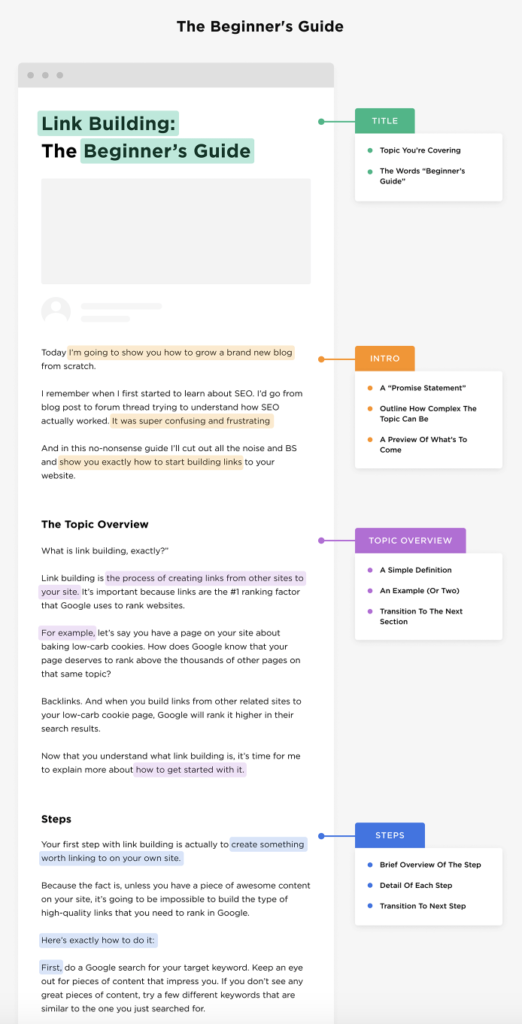With the ever-growing digital world, blogging has become an essential tool for businesses and individuals alike. A compelling blog not only showcases your expertise and knowledge but also drives traffic, generates leads, and builds brand credibility. To maintain an engaging and diverse blog, it’s important to publish various types of posts that cater to different audiences and serve different purposes. In this blog post, we’ll explore five types of blogs you should be publishing: how-to posts, ultimate guides, industry news, resource lists, and expert roundups. Let’s dive in!
5 Blog Post Types to Capitalize On
1. How-to Posts
How-to posts are educational articles that provide step-by-step instructions to help your readers achieve a specific goal or solve a particular problem. These posts are highly sought after as they offer actionable advice and practical solutions. They cater to a wide range of readers, from beginners seeking basic knowledge to more advanced users looking for expert tips.
When creating a how-to post, start by identifying a common problem or question that your target audience encounters. Once you’ve chosen a topic, break down the process into simple, easy-to-follow steps. Use clear and concise language to explain each step, ensuring that readers of varying skill levels can understand and apply the information.
To enhance the clarity of your how-to post, consider incorporating visual aids such as images, infographics, or videos. These visuals can help illustrate complex concepts and processes, making your content more accessible and engaging. Additionally, you can use numbered lists or bullet points to make the steps stand out and improve the overall readability of your post.
Another important aspect of how-to posts is anticipating potential questions or roadblocks that your readers might face. Address these concerns within the post, offering troubleshooting tips or alternative solutions. This will demonstrate your thorough understanding of the topic and further establish your credibility as an expert in your niche.
Finally, encourage your readers to engage with your content by inviting them to share their experiences, ask questions, or provide feedback in the comments section. This interaction not only fosters a sense of community around your blog but also helps you identify areas for improvement and additional topics that your audience is interested in.
2. Ultimate Guides
Ultimate guides are comprehensive, in-depth articles that cover a specific topic extensively. These posts aim to be the ultimate source of information on the subject, providing your readers with everything they need to know in one place.
Unlike how-to posts, ultimate guides offer a deep dive into the topic, discussing various aspects, tips, and best practices. They cater to readers who want a thorough understanding of a subject or those looking to expand their knowledge beyond the basics.
To create a successful ultimate guide, start by choosing a topic that is both relevant to your niche and of interest to your target audience. Conduct thorough research, gathering information from reliable sources, and identifying key points that your readers should know. This may involve reading books, articles, studies, or even interviewing experts in the field to ensure you cover all relevant aspects of the topic.
When organizing the content for your ultimate guide, use a logical structure that allows readers to easily navigate the information. Begin with an introduction that outlines the purpose of the guide and provides an overview of the topics to be covered. Follow this with well-defined sections or chapters that address different aspects of the subject. Use headings, subheadings, bullet points, and numbered lists to break up the text and make it more digestible.
Incorporating visuals such as images, charts, infographics, or even videos can greatly enhance your ultimate guide, making it more engaging and informative. Visual aids can help clarify complex concepts, emphasize important points, and create a more appealing reading experience for your audience.
To ensure your ultimate guide remains a valuable resource, keep the information up-to-date by regularly reviewing and updating the content. This may involve adding new insights, addressing recent developments, or refining the presentation of the information based on feedback from your readers.
By offering an all-inclusive resource that covers a topic in great detail, you’ll position yourself as an expert in your field, attracting readers who seek comprehensive information and in-depth analysis. Ultimate guides can also help boost your blog’s search engine rankings, as search engines tend to favor high-quality, in-depth content that provides valuable information for users.
3. Industry News
Staying up-to-date with the latest industry news is crucial for any business or professional. Publishing regular news updates on your blog demonstrates that you’re well-informed and helps your readers stay informed as well. Industry news posts can cover new products, updates, trends, events, or research related to your niche. These posts attract readers who want to stay current with the latest developments and insights in their field.
To create engaging industry news posts, start by monitoring reputable news sources, industry publications, and social media channels to identify relevant and timely news stories. When selecting a news item to cover, consider its significance to your audience and the potential impact it may have on your industry.
In your news post, begin with a summary of the key points, ensuring that you convey the essential information in a concise manner. Then, expand upon the story by providing context, background information, or highlighting the implications of the news for your industry. This will help your readers better understand the significance of the story and its relevance to their interests or profession.
To make your news posts stand out, add your own analysis or commentary, sharing your perspective on the news item and its potential consequences. This personal touch can help establish your expertise and thought leadership, as well as spark discussions and debates among your readers.
Encourage reader engagement by inviting them to share their thoughts, opinions, or questions in the comments section. This will not only foster an active community around your blog but also provide valuable insights into your readers’ perspectives on the news.
4. Resource Lists
Resource lists are curated collections of tools, websites, apps, or any other resources that your readers might find helpful. These posts are particularly popular because they save your audience time and effort by presenting the best resources in one place. Resource lists cater to readers who are seeking recommendations and solutions to improve their skills, productivity, or knowledge in a specific area.
To create a valuable resource list, start by researching and selecting resources that cater to your audience’s needs and interests. This may involve exploring various platforms, testing tools, or evaluating websites to determine their usefulness and relevance. Consider the reliability, user-friendliness, and overall value each resource offers to ensure that your recommendations meet the expectations of your readers.
When compiling your resource list, organize the resources into logical categories or groupings that make it easy for readers to find what they’re looking for. For each resource, provide a brief description that highlights its key features, benefits, or applications. This will help your readers quickly understand the purpose of each resource and determine its relevance to their needs.
Include a link to each resource, allowing your readers to access the tools or websites directly from your blog post. If applicable, consider mentioning any pricing information or subscription plans associated with the resource, as this can be an important factor for your readers when evaluating its suitability.
To keep your resource list relevant and up-to-date, regularly review the resources and make any necessary updates or additions. This may involve removing outdated or inactive resources, adding new discoveries, or updating descriptions to reflect changes in the tools or websites.
By offering well-researched and carefully curated resource lists, you’ll provide your readers with a valuable service that simplifies their search for the best tools and resources in your niche. This, in turn, will help establish your blog as a go-to source of information and recommendations, attracting new readers and fostering loyalty among your existing audience.
5. Expert Roundups:
Expert roundups are blog posts that feature insights, tips, or advice from industry leaders or influencers. These posts offer your readers access to diverse opinions and expert knowledge, adding credibility to your blog. To create an expert roundup, reach out to experts in your niche and ask them to contribute a quote, tip, or opinion on a specific topic.
When compiling the responses, remember to include a short bio and a link to each expert’s website or social media profile. This not only gives credit to the contributors but also allows your readers to explore their work further.
Not sure where to start? Consider cold emailing or LinkedIn messaging people in your network you think could offer advice. You can also utilize services like HARO (Help a Reporter Out) or HAB2B (Help a B2B Writer).
Commit to These Blog Types and Improve Your Content Marketing
Diversifying your blog content by publishing a mix of how-to posts, ultimate guides, industry news, resource lists, and expert roundups can significantly boost your blog’s appeal and effectiveness. By catering to different reader preferences and needs, you’ll attract a wider audience, increase engagement, and establish yourself as an authority in your niche. Varied content will keep your readers coming back for more, as they know they can find valuable information, tips, and resources on your blog.
If you’re not sure where to start, consider getting in touch with a content marketing agency to help!
When creating these different types of blog posts, always keep your target audience in mind and aim to provide content that is both informative and engaging. Remember to update your content regularly, especially ultimate guides and resource lists, to ensure they stay relevant and accurate. Finally, don’t hesitate to ask for feedback from your readers and adjust your content strategy based on their preferences and needs.








